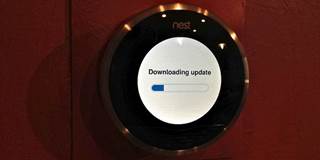The possibilities associated with the Internet of Things seem endless, and the predictions have been extravagant. But, while the gains are indeed likely to be tremendous, it will take time for the changes in the way businesses operate to be detected at the macroeconomic level.
SAN FRANCISCO – Nearly 30 years ago, the economists Robert Solow and Stephen Roach caused a stir when they pointed out that, for all the billions of dollars being invested in information technology, there was no evidence of a payoff in productivity. Businesses were buying tens of millions of computers every year, and Microsoft had just gone public, netting Bill Gates his first billion. And yet, in what came to be known as the productivity paradox, national statistics showed that not only was productivity growth not accelerating; it was actually slowing down. “You can see the computer age everywhere,” quipped Solow, “but in the productivity statistics.”
Today, we seem to be at a similar historical moment with a new innovation: the much-hyped Internet of Things – the linking of machines and objects to digital networks. Sensors, tags, and other connected gadgets mean that the physical world can now be digitized, monitored, measured, and optimized. As with computers before, the possibilities seem endless, the predictions have been extravagant – and the data have yet to show a surge in productivity.
A year ago, research firm Gartner put the Internet of Things at the peak of its Hype Cycle of emerging technologies.

SAN FRANCISCO – Nearly 30 years ago, the economists Robert Solow and Stephen Roach caused a stir when they pointed out that, for all the billions of dollars being invested in information technology, there was no evidence of a payoff in productivity. Businesses were buying tens of millions of computers every year, and Microsoft had just gone public, netting Bill Gates his first billion. And yet, in what came to be known as the productivity paradox, national statistics showed that not only was productivity growth not accelerating; it was actually slowing down. “You can see the computer age everywhere,” quipped Solow, “but in the productivity statistics.”
Today, we seem to be at a similar historical moment with a new innovation: the much-hyped Internet of Things – the linking of machines and objects to digital networks. Sensors, tags, and other connected gadgets mean that the physical world can now be digitized, monitored, measured, and optimized. As with computers before, the possibilities seem endless, the predictions have been extravagant – and the data have yet to show a surge in productivity.
A year ago, research firm Gartner put the Internet of Things at the peak of its Hype Cycle of emerging technologies.